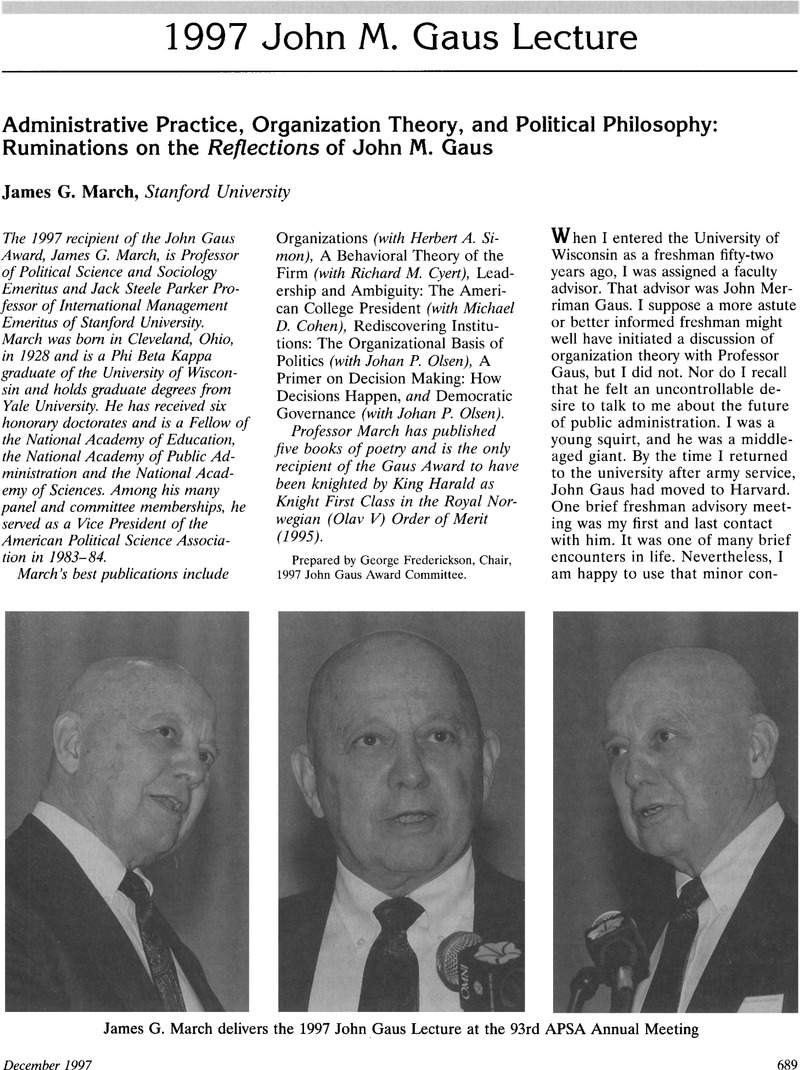Crossref Citations
This article has been cited by the following publications. This list is generated based on data provided by Crossref.
Olsen, Johan P.
2004.
Citizens, Public Administration and the Search for Theoretical Foundations.
PS: Political Science & Politics,
Vol. 37,
Issue. 1,
p.
69.
Hernes, Hans‐Kristian
2004.
Public Administration in Norway: a rejoinder.
Public Administration,
Vol. 82,
Issue. 3,
p.
691.
Callahan, Richard
2007.
Governance: The Collision of Politics and Cooperation.
Public Administration Review,
Vol. 67,
Issue. 2,
p.
290.
Yang, Kaifeng
Holzer, Marc
and
Zhang, Yahong
2007.
Handbook of Research Methods in Public Administration, Second Edition.
Vol. 71,
Issue. ,
Yang, Kaifeng
and
Hsieh, Jun Yi
2007.
Managerial Effectiveness of Government Performance Measurement: Testing a Middle‐Range Model.
Public Administration Review,
Vol. 67,
Issue. 5,
p.
861.
Christensen, Tom
2015.
Statsvitenskapelig organisasjonsforskning i Norge - utvikling av teori og praksis.
Norsk statsvitenskapelig tidsskrift,
Vol. 31,
Issue. 1,
p.
50.
P. Olsen, Johan
2018.
The Bergen approach topublicadministration andpoliticalorganization.
Norsk statsvitenskapelig tidsskrift,
Vol. 34,
Issue. 4,
p.
188.
Olsen, Johan P.
2019.
Sentraladministrasjonen i en utfordrende æra: Tid for ettertanke.
Norsk statsvitenskapelig tidsskrift,
Vol. 35,
Issue. 1,
p.
4.
Wagner, Caroline S.
and
Raadschelders, Jos C.N.
2025.
From Disciplinary Depth to Interdisciplinary Breadth: The Case of Public Administration.
The American Review of Public Administration,



